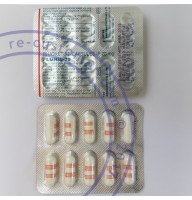Taking Klonopin (clonazepam) and Prozac (fluoxetine) together can potentially lead to increased central nervous system depression. Both medications affect neurotransmitter levels in the brain, albeit through different mechanisms. Klonopin is a benzodiazepine that enhances the effect of gamma-aminobutyric acid (GABA), a neurotransmitter that reduces brain activity. Prozac, on the other hand, is a selective serotonin reuptake inhibitor (SSRI) that increases serotonin levels in the brain by inhibiting its reuptake.
When these medications are taken together, there is an increased risk of drowsiness, sedation, dizziness, confusion, and impaired coordination. This combination can also lead to respiratory depression, especially if high doses are taken or if other respiratory depressants (such as opioids) are also used. Elderly individuals are particularly susceptible to these effects.
Additionally, combining Klonopin and Prozac can increase the risk of developing serotonin syndrome, a potentially life-threatening condition characterized by agitation, hallucinations, rapid heartbeat, rapid changes in blood pressure, increased body temperature, overactive reflexes, nausea, vomiting, and diarrhea.
It's crucial for healthcare providers to carefully monitor individuals who are prescribed both Klonopin and Prozac together. They may adjust the dosages of each medication or consider alternative treatments to minimize the risks associated with their combined use. Patients should avoid alcohol and other central nervous system depressants while taking these medications unless specifically instructed otherwise by their healthcare provider.
If you are taking both Klonopin and Prozac and experience any concerning symptoms, such as severe drowsiness, difficulty breathing, or unusual changes in mood or behavior, it's important to seek medical attention immediately.
In summary, while Klonopin and Prozac can be effective medications for their respective conditions, their simultaneous use requires careful monitoring due to the potential for interactions and increased risk of central nervous system depression and serotonin syndrome.

